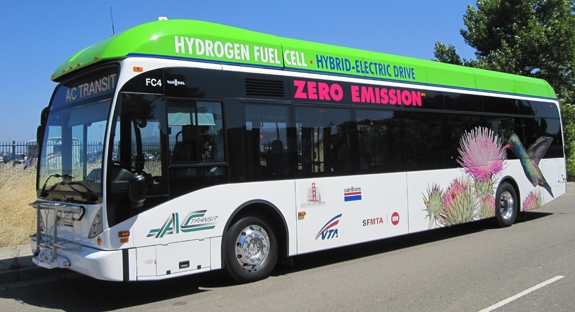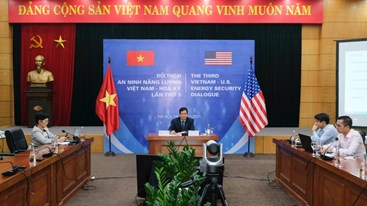Friday, 26/04/2024 | 23:23 GMT+7
It probably makes sense to you that idling your car —running your engine when you’re not moving— truly gets you nowhere. It reduces your vehicle’s fuel economy, costs you money, and creates pollution. A little-known fact from the U.S. Department of Energy: Idling for more than 10 seconds uses more fuel and produces more emissions that contribute to smog and climate change than stopping and restarting your engine does.
Researchers estimate that idling of heavy-duty and light-duty vehicles combined wastes about 6 billion gallons of fuel and produces about 60 million tons of CO2 emissions annually. About half of that is from commercial vehicles, including transit buses.
So when the Federal Transit Administration and America's public transit agencies turn their attention to start/stop or anti-idle buses, it makes a big difference.
Advances in vehicle technology have made it easier than ever to avoid idling your personal vehicle, and the same is now true for large transit buses. Several companies have developed systems that allow transit vehicles to use start/stop features that cut engine idling significantly even while important onboard systems —like air conditioning and power steering— continue to operate.
Anti-idle transit buses get about 33 percent better fuel economy than regular hybrid buses and twice that of a normal diesel bus.

As the technology has become more widely available, FTA capital grants have allowed transit agencies to take advantage of it. Public transportation authorities have leveraged this FTA assistance to reduce CO2 emissions in their communities and save fuel.
“We are seeing significant fuel economy benefits with the two pilot buses programmed with the new stop/start function,” said Dave Kilmer, executive director of Red Rose Transit in Lancaster County and Berks Area Regional Transit Authority in Berks County (both in Pennsylvania). The two agencies recently secured a MAP-21 Low or No Emission Vehicle grant from FTA to purchase 17 anti-idle buses.
“In addition," Kilmer notes, "our customers and drivers have told us these hybrid buses with start/stop capabilities are much quieter.”
Paratransit vehicles offer another opportunity for reduced idling. Currently, paratransit vehicles spend up to 30 percent of their on-road time idling while riders board and exit the bus. Operators have to keep the engines running during that time so other passengers have light and heating or air conditioning.
The FTA recently awarded the Utah Transit Authority a grant to outfit two of its existing paratransit buses with hybrid-drive systems that capture energy. That energy can then be used to help power the vehicles and run the climate control systems, lights, ramps, and even the wheelchair lift while the vehicle engines are stopped. The change will reduce wear and tear on vehicle parts and decrease vehicle emissions, and cut fuel use by 10 to 15 percent.
The bottom line? American vehicle manufacturers are beginning to meet a crucial need expressed by America's transit agencies, and the FTA is helping to get this new anti-idling technology —and its fuel saving, emissions cutting benefits— into American communities.
Anh Tuan


.png?w=367&h=206&mode=crop)
.jpg?w=367&h=206&mode=crop)




.jpg?w=367&h=206&mode=crop) Energy efficiency and conservation usage is an important aspect of the national energy development strategy
05/03/2024
Energy efficiency and conservation usage is an important aspect of the national energy development strategy
05/03/2024
 Challenges and Opportunities to promote energy efficiency market in Vietnam
Challenges and Opportunities to promote energy efficiency market in Vietnam
 The Ministry of Industry and Trade requests government agencies to coordinate in organizing Earth Hour 2024
The Ministry of Industry and Trade requests government agencies to coordinate in organizing Earth Hour 2024
 Consultation on Energy Efficiency Boiler Catalogue and Wood Drying Guideline
Consultation on Energy Efficiency Boiler Catalogue and Wood Drying Guideline
 Son Ha Co., Ltd, applies energy efficiency and conservation measures
Son Ha Co., Ltd, applies energy efficiency and conservation measures
.png?w=367&h=206&mode=crop) Request for expression of interest - C2.1.13: Capacity Building on energy efficiency policies development
Request for expression of interest - C2.1.13: Capacity Building on energy efficiency policies development
 Phuc Kien Co., Ltd., is effectively implementing energy-saving measures
Phuc Kien Co., Ltd., is effectively implementing energy-saving measures
 Request for expression of interest - C2.1.12: Independent monitoring of safeguards implementation
Request for expression of interest - C2.1.12: Independent monitoring of safeguards implementation